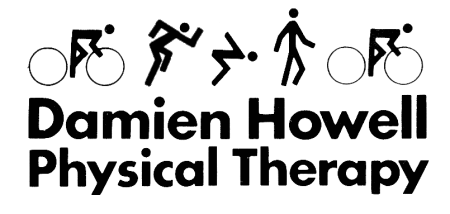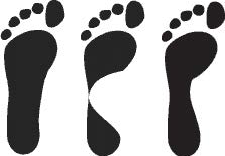Osteoarthritis – Bad News More Than Good News
Osteoarthritis occurs in a joint when there is more degeneration of the joint cartilage than regeneration of the joint cartilage. Cartilage is a soft tissue on the ends of bones. Cartilage provides a smooth surface to allow free movement of joint, provides a cushioning, and for joint stability. Cartilage tissue is poorly designed for repair…
Read MoreMugged – Smacked and Common Sense: Exercise In Dark Outdoors
The short dark day of winter pose a challenge for the exercise enthusiast who prefers to exercise out doors. Most everyone has some fear walking/running in the dark. There are justifiable concerns related to safety. On the positive side there can be significant benefits and rewards from getting outside in the dark winter days and…
Read MoreDon’t do that
A widely held belief among health care professionals is that it is a waste oftime to recommend to an injured runner to stop running. The assumptionis a dedicated runner will not follow recommendation of “don’t do that”. With a few exceptions most injured runners do not need to be told “don’trun”. The exception is a…
Read MoreEvolution of the running shoe: evidence & opinion
Forty years ago there was only one running shoe designed for long distance running. Itwas a black canvas shoe shaped like a track spike shoe with a gum rubber outsole andConverse was the manufacturer. Now there is a veritable plethora of running shoes tochoose from. Ten years ago I wrote an article highlighting the fact…
Read MoreShould you stretch it out – Pain too loose too stiff?
Generally, there are one of two scenarios related to musculoskeletal pain and injury. Either there is not enough movement or there is too much movement. If a muscle is in spasm, if a joint is stuck, or if a muscle-tendon unit has adaptively shortened in length are all examples of not having enough movement. If…
Read MoreCreditability of Shoe Selection Based on Foot Print Shape and Injury Risk
Running magazines and internet shoe sales sites often recommend that the shape of the wet foot print should be used to determine which type of running shoe should be selected. There is a common belief that a foot print reflecting low arch (flat feet) should select shoes designed for “motion control”. Motion control shoes are presumed to control excessive motion…
Read MoreEverybody has got their guy
Paul Ingraham writes a blog www.saveyourself.ca. Paul is a health science journalist and a former massage therapist. In a recent blog entitled “Every little thing a nice physical therapist does is magic”, he presented an interesting concept that “every body’s got their guy”. Individuals with chronic pain often have a healthcare practitioner that is their favorite that they “swear…
Read MoreExpectations Treatment Outcomes
The expectations of a patient, patient satisfaction regarding treatment and treatment outcomes are related in a very complex manner. Whether you have an over use injury as a result of recreation sports, a traumatic injury, or chronic musculoskeletal disease process like rheumatoid arthritis awareness of the interaction of your expectations, satisfaction with treatment provided, and…
Read MoreOrthopedic post-surgical protocols & Physical Therapy
If you have the misfortune of needing to have an elective orthopedic surgery, you will likely be referred to Physical Therapy following the surgery. You will likely follow a post –surgical rehabilitation protocol. Orthopedic surgeons and Physical Therapist have developed standard protocols for each surgical diagnosis or surgical procedure. The protocol will outline the step…
Read More








